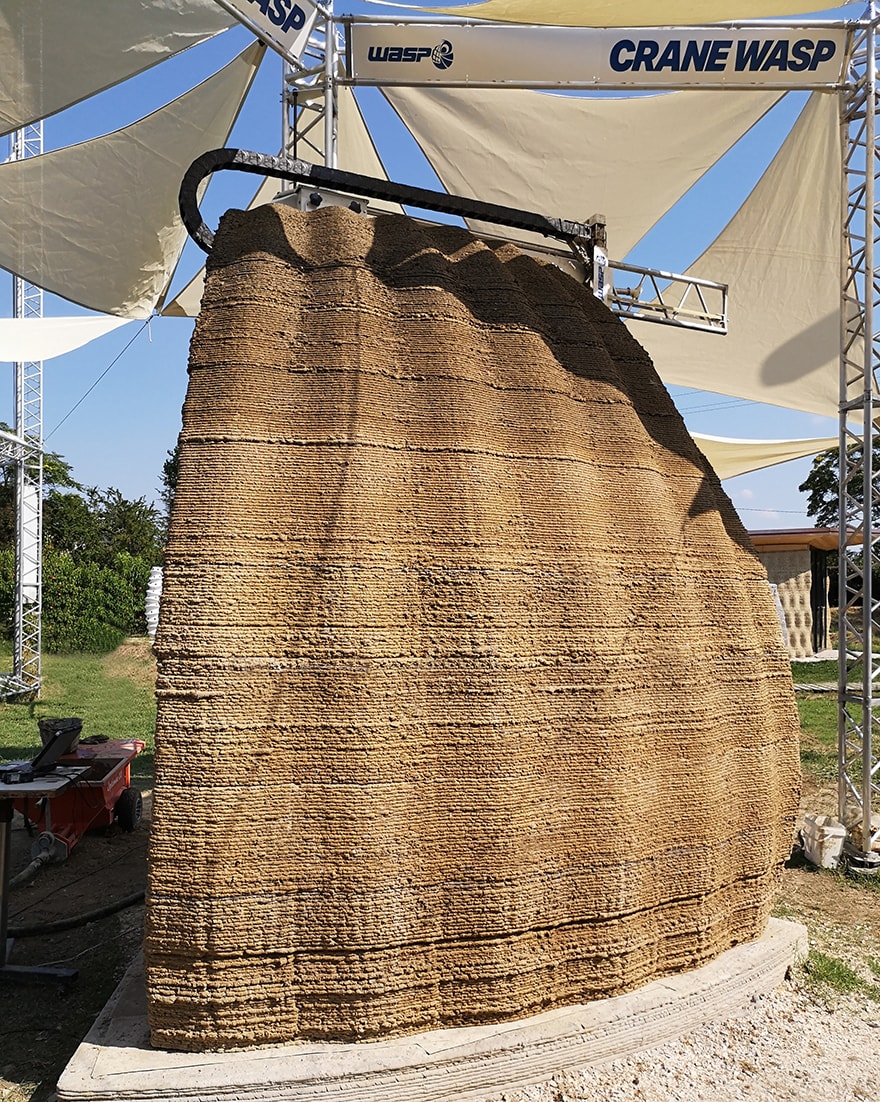WASP, the Italian 3D printing specialist, and MCA-Mario Cucinella Architects are looking to build 3D printed homes at a site near Bologna.
Named TECLA, the housing project takes as its model the habitat of the potter wasp and aims to create a new circular housing archetype using entirely reusable, recyclable materials from the local terrain.
Built using Crane WASP, the latest innovation in on-site 3D construction, TECLA represents a step-change in the move towards eco-housing, claim the project leaders.
“WASP takes inspiration from the potter wasp,” says WASP co-founder Massimo Moretti. “We build 3D printed houses using earth found on the spot, making it very sustainable. This way, we have the oldest material and a state-of-the-art technology merging to give new hope to the world.”
Mario Cucinella, founder of MCA, says: “Together with WASP we aim at developing an innovative 3D-printed prototype for a habitat that responds to the increasingly urgent climate crisis and community needs.
“We need a paradigm shift in the field of architecture that gets closer to the needs of people, and have found ‘an answer for the Earth within the earth’. It is a collaboration that becomes the union between empathic architecture and the application of new technologies.”

Built using Crane WASP, TECLA represents a step-change in the move towards eco-housing, claim the project leaders. It takes as its model the habitat of the potter wasp (below)

Image: Paul Reeves/Dreamstime.com
TECLA will be the first habitat to be built using multiple collaborative 3D printers, offering a greater scope of scale than ever before. Used in the context of a wider masterplan, TECLA, say its proponents, has the potential to become the basis for brand new autonomous eco-cities that are off-grid.
TECLA will be the first house to be entirely 3D printed using locally sourced clay – a biodegradable and recyclable “km 0 natural” material which will effectively make the building zero-waste. It will be built to adapt to multiple environments, and it will be suitable for self-production through the use of WASP’s Maker Economy Starter Kit.
This approach will limit industrial waste and offer a unique sustainable model that will boost the national and local economy, improving the wellbeing of communities. The 3D printer will produce the entire structure at once, significantly reducing construction speed.
The creation of the new circular housing type has been helped by research into homelessness undertaken by the School of Sustainability in Bologna, a professional school founded by Mario Cucinella, which was conducted with the support of MA students from the Sustainable Environmental Design programme at the Architectural Association School of Architecture in London.
The collaboration between WASP and MCA has been supported by Mapei, a worldwide producer of construction materials, which has studied the clay materials and identified the key components within the raw earth mixture to create the final highly optimized printable product. Structural tests were carried out by Milan Ingegneria, a Milan-based engineering consultancy, which worked on the optimisation of the shape to create a self-supporting structure.
Comments
Comments are closed.












This report is tantalizing. It does not show a house. I have been involved in construction using compressed earth blocks but the idea of using what seems like extruded clay is new.